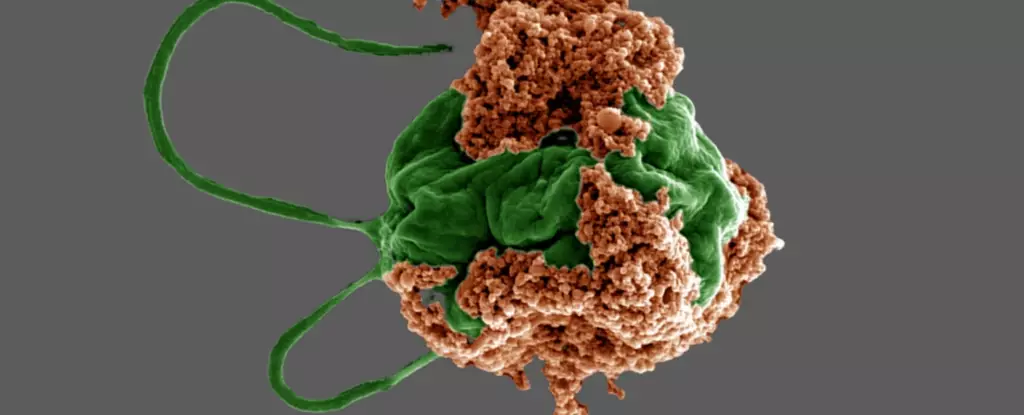Metastatic tumors in the lungs present a significant challenge in the field of cancer treatment. Conventional chemotherapy often proves to be ineffective in targeting these tumors directly. The inability to accumulate in high concentrations in the lungs hinders the treatment process. However, a team of researchers from the Wang lab and Zhang Research Group at the University of California, San Diego has been working on a groundbreaking solution.
The team has spent years developing biohybrid microrobots, which are small objects made from a combination of natural and synthetic materials. Unlike traditional microrobots that are rigid and toxic to humans, biohybrid microrobots offer a more promising approach to cancer treatment. By utilizing microalgae, specifically Chlamydomonas reinhardtii, these microrobots are able to move autonomously through organs like the lungs using flagella, a hair-like appendage.
The biohybrid microrobot, known as algae-NP(DOX)-robot, combines live green microalgae with nanoparticles coated in red blood cell membranes. This unique combination helps to enhance the microrobot’s biocompatibility and prevent it from being targeted by the immune system. The nanoparticles within the microrobot contain doxorubicin, a common chemotherapy drug, which is directly delivered to the lungs through the trachea. This targeted approach minimizes side effects on other organs and allows for efficient distribution of the drug in the lungs.
In experiments conducted on mice with lung metastases, the algae-based microrobots demonstrated significant improvements in therapeutic outcomes. Compared to free drugs or static drug-loaded nanoparticles, the biohybrid microrobots accumulated in higher concentrations and were retained longer in the lungs. This resulted in a 40% increase in median survival time for the treated mice, extending survival from 27 to 37 days. The microrobots were eventually broken down by immune cells into non-toxic components and eliminated from the body.
The success of biohybrid microrobots in delivering chemotherapy to lung tissues opens up possibilities for treating a variety of pulmonary diseases. The research team is now exploring the application of this technology in other lung-related conditions such as cystic fibrosis and idiopathic pulmonary fibrosis. Moreover, incorporating additional motion control strategies like magnetic guidance or ultrasound trapping could further enhance drug accumulation at specific target sites in the body.
While the use of biohybrid microrobots in clinical settings may still be a distant reality, the potential for revolutionizing cancer treatment with this technology is promising. By combining living microalgae with cell membrane-coated nanoparticles, researchers are paving the way for more effective and non-invasive cancer treatments. The future of bioengineered cancer treatments looks bright with the development of innovative approaches like biohybrid microrobots.


Leave a Reply